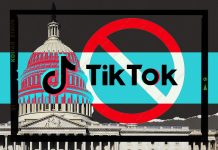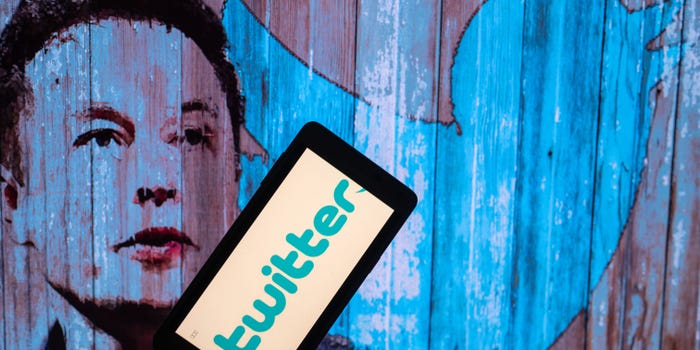
Elon Musk’s takeover of Twitter for $44 billion has been called many things. Risky. A victory for free speech. A narcissistic ego trip. A complete disaster. The mistake of a very divorced man. True or false, these criticisms are superficial. What is the method behind Elon’s madness?
Getting the Gang Back Together
Based on moves like ending the ban on COVID “misinformation,” attacking “wokeness,” and unbanning far-right instigators it looks like Elon’s business plan for Twitter depends on winning over the right-wing refugees who fled to Gab, Parler, and Truth Social.
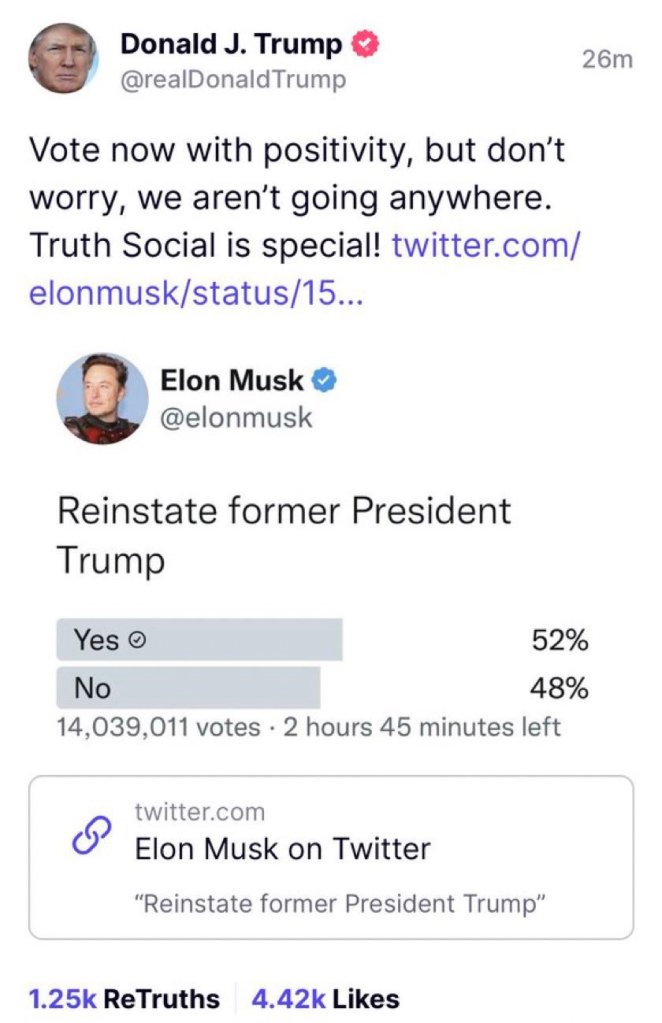
@realDonaldTrump was one of the most sensationally offensive and popular accounts on Twitter. Many users left the site after Trump was banned—not only his conservative supporters but also fans of his trolling style. Unfortunately for Elon the Trump train had left the station. The former president and his followers pledged to stay on his proprietary ripoff of Mastodon, Truth Social.
Unable to convince Trump to leave TS Elon was left to create traffic-boosting outrage on his own. Sadly he is not half the poster Trump was and his efforts have fallen short.
Elon has not only drawn in conservatives, he has also driven out liberals. Two million new users fled Twitter for Mastodon since Elon’s takeover of the bird site. He started to ban journalists and other accounts that report critically on him and his businesses. On December 18, he banned links to competing sites including Mastodon, an attempt to stem the outflow of users.
Elon has posted often about the business metrics of Twitter since he became its CEO and sole director. He has boasted of increased traffic, a new revenue stream from selling verifications, and a 75% layoff rate. Elon claimed on December 20, 2022 that these moves had saved Twitter from a $3 billion shortfall. He cited these numbers to support his argument that Twitter could become profitable (it is a well-known money pit that has never made a profit).
It looks like Elon is laying waste to the company: gutting the moderation teams, alienating advertisers and users, and discrediting the verification system. Is his effort to make Twitter profitable just a desperate attempt to flip the company and recoup some of his losses? If so, then Elon must have really lost his mind. He wants to sell it at cost, for $44 billion:
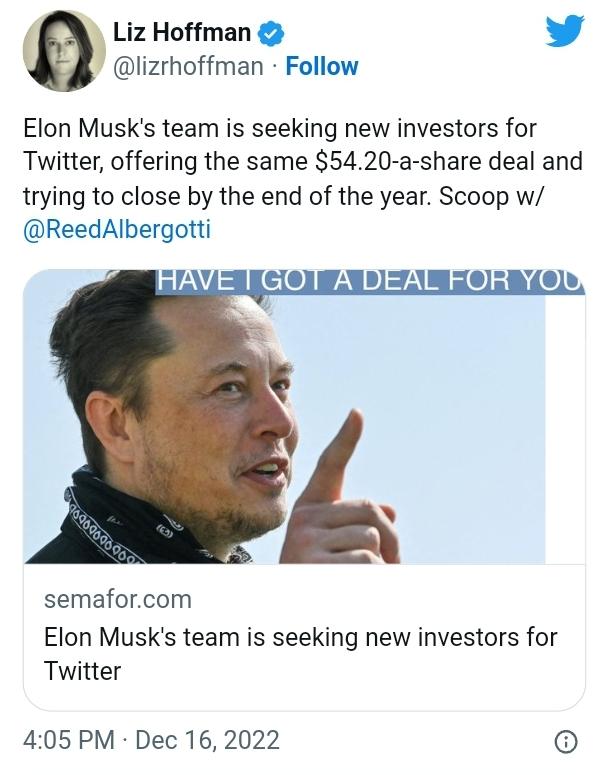
If this is all true and Elon is trying to salvage an impulsive and egotistical purchase, then who were the foolish investors willing to support his hostile takeover?
The House of Saud
Elon’s plan to buy Twitter and take it private (remove it from the stock exchange) required him to own a majority of all shares of the company. To achieve this he had put together $36.9 billion of his own cash, assets, stocks, and loans. The remaining $7.1B was provided by a group of 20 investors in exchange for shares of the newly private Twitter.
Chief among Elon’s backers is Prince Al Waleed bin Talal Al Saud. Part of the Saudi royal family, Alwaleed is also the founder, CEO, and 95% majority shareholder of Kingdom Holding Company (KHC). KHC is a massive investment firm partially owned by Saudi Arabia’s sovereign wealth fund, and so invests in the interests of the state.
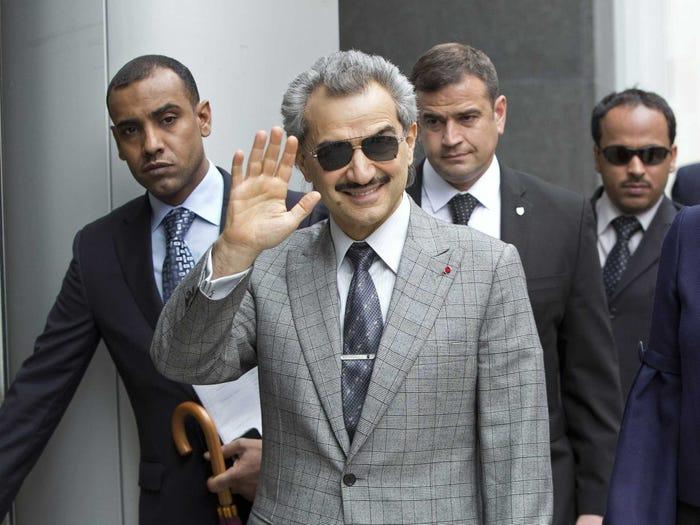
Alwaleed’s stake in Twitter was valued at $1.9B in Elon’s takeover bid. Even at this inflated price (38% above market) the Prince had initially refused the offer as too low:
I don’t believe that the proposed offer by @elonmusk ($54.20) comes close to the intrinsic value of @Twitter given its growth prospects.
Being one of the largest & long-term shareholders of Twitter, @Kingdom_KHC & I reject this offer.
Prince Alwaleed, 14 April 2022. From Twitter.
Elon was able to convince Alwaleed that he could realize Twitter’s potential. Rather than take the cash Alwaleed pledged to reinvest his $1.9B in the new Twitter. He now owns about 4% of the company and is its second largest shareholder.
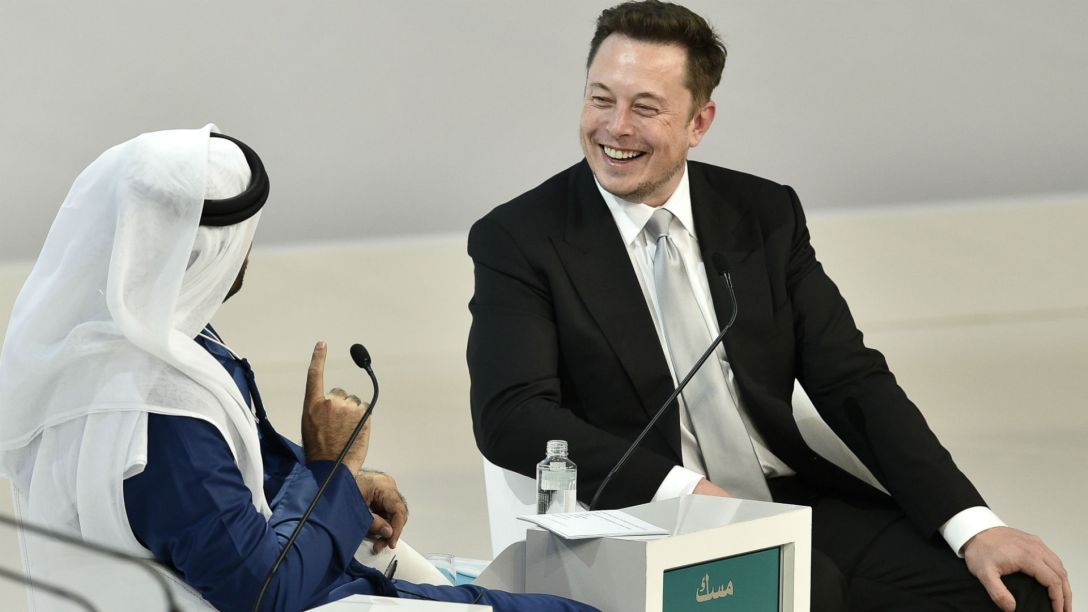
Prince Alwaleed and KHC are in no hurry to pull profits from Twitter. They have been invested in the company since before it went public and they will remain after it goes private again. Throughout this time Twitter has been a net loss for investors, burning through hundreds of millions of dollars more than it has ever brought in as revenue. If money is not the goal of Prince Alwaleed’s Twitter strategy then what is his goal?
A Caged Bird Still Sings
Kingdom Holdings first became a Twitter shareholder in 2011. On December 19, 2011, Bloomberg reported that KHC had invested $300 million in Twitter in exchange for a “strategic stake” of more than 3% of the company.
2011 was the year of the Arab Spring, the revolutionary wave which swept away the governments of Tunisia, Egypt, Libya, and Yemen. Protests broke out throughout the states of the Arab League, including Saudi Arabia.
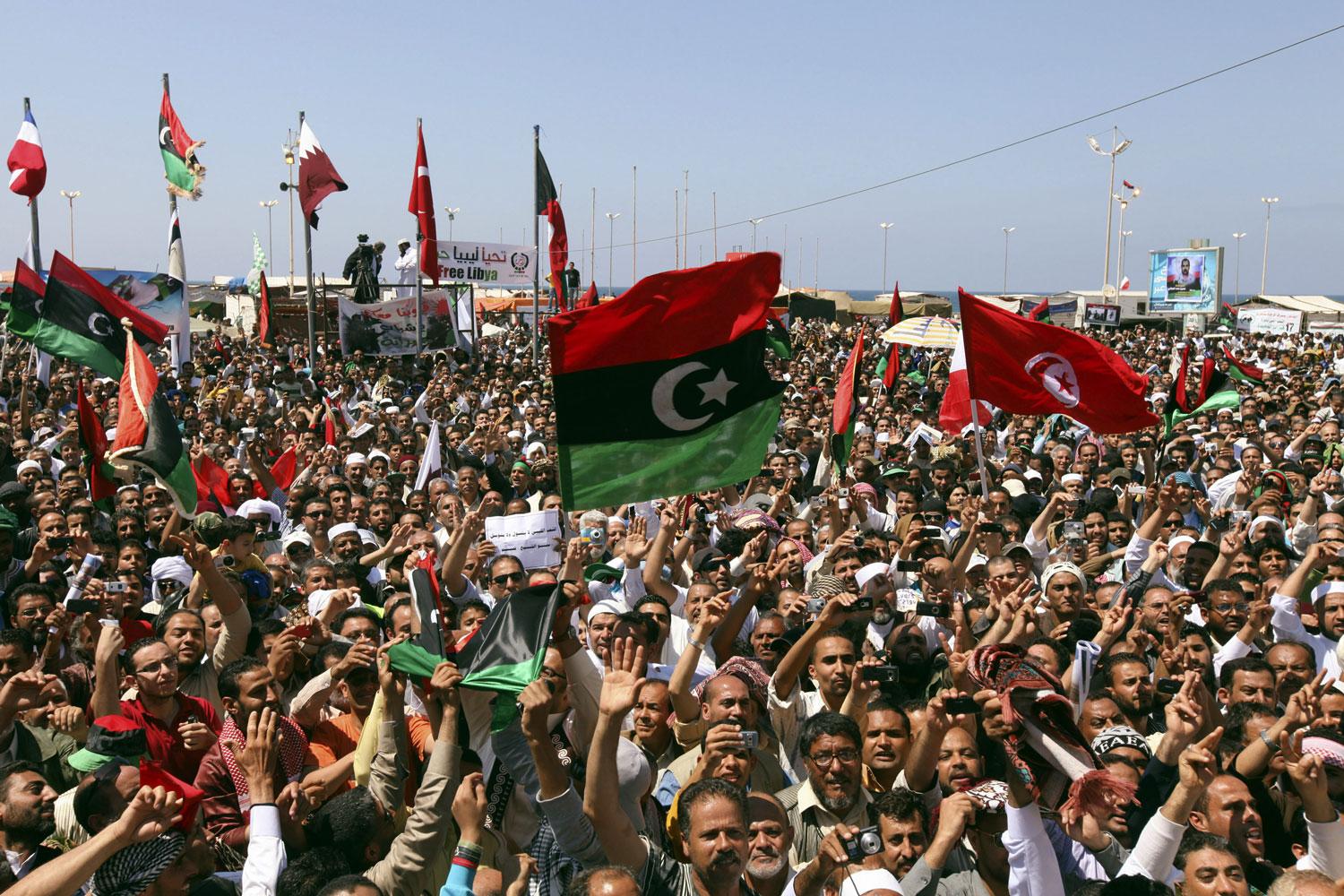
On January 29, 2011 protesters in Jeddah criticized the government in the wake of a deadly flood. Dozens were arrested only 15 minutes after the demonstration began. A Day of Rage planned for March 11 “fizzled in all but restive Eastern province, where the country’s minority Shiite Muslims have been holding demonstrations for weeks.” Saudi protests remained small and so did the concessions. This was the heart of the counter-revolution, the Arab Winter.
Despite their relatively small scale, the Saudi protests shared something in common with those that forced the Egyptian and Tunisian governments to resign. They were organized on social media:
Mass messages were sent over BlackBerry smart-phones calling for popular action in response to the flood, an unusual move in the Gulf state.
Montreal Gazette, “Flood sparks rare action”. January 29, 2011.
The Day of Rage had been organized on Facebook. Though the actual turnout would be only a few hundred people the Facebook group had attracted tens of thousands of users.
Throughout the Arab Spring social media was used to spread calls to action, facilitate political discussion, and organize widespread protests. A survey by the Dubai School of Government found that almost 90% of Egyptians and Tunisians had organized or promoted a protest on Facebook.
The Egyptian government had used an internet “killswitch” to prevent people from organizing online. This resulted in more users switching to Twitter, which sent messages via SMS instead of the main Internet Service Providers. Though Twitter use was limited to .015% of the population, almost all of the 10,000 daily tweets were about the revolution.

So while King Abdullah was supporting counter-revolutionary forces across the Arab World, his cousin Alwaleed was buying a “strategic stake” in one of the protesters’ critical tools. What does Saudi Twitter look like today?
Saudi Arabia has also mastered the art of using the platform to mould public opinion tactfully . . . weaponising it by embedding it with their narratives is more advantageous instead of banning it outrightly like China.
From Swarajyamag, “Maverick’s Machinations: Musk no longer Twitter’s largest shareholder”. April 15, 2022.
It is worth noting that many of the bot accounts that Elon complained about are from Saudi bot farms. Saudi bots are cheaply available for global clients. They even advertise in local American newspapers.
Saudi Arabia is one of the most Twitterbrained countries on earth. With 14 million users, they only lag behind Britain by 4 million — despite the fact that the UK has nearly double the population of the KSA. This means an estimated 40% of Saudis are Twitter users despite the fact that Twitter didn’t even have an Arabic interface until 2018.
Twitter has provided the Saudi royal family with the means to manage public discourse in Arabia. Messages pass through Twitter’s central servers, making it easy to filter and broadly censor information. Bot farms can control what is trending and who is an influencer. Well-placed friends of the King can use Twitter to direct social narratives.
Projecting Saudi Soft Power
Given this managed media environment, what did Saudi citizens think of Musk’s takeover bid? Analyst Jamal AlTamimi described the public response:
Saudis as a whole are very happy with the deal because they [believe] Twitter’s administration is against them and they think Musk will be more just.
From Al-Monitor, “Saudi Arabia and Turkey react to Elon Musk’s Twitter takeover”. April 26, 2022.
Perhaps this is so, and the re-privatized company will remove restrictions placed on Saudi Twitter and the narratives it promotes.
In any case Elon must answer to his other shareholders, especially because of how much debt he has taken on to gain control of the company. This is, according to Senator Chris Murphy (D-CT), a national security threat demanding the attention of the Committee on Foreign Investment in the U.S. (CFIUS). As the sole director of the company, Elon’s personal business can instantly become Twitter’s business.
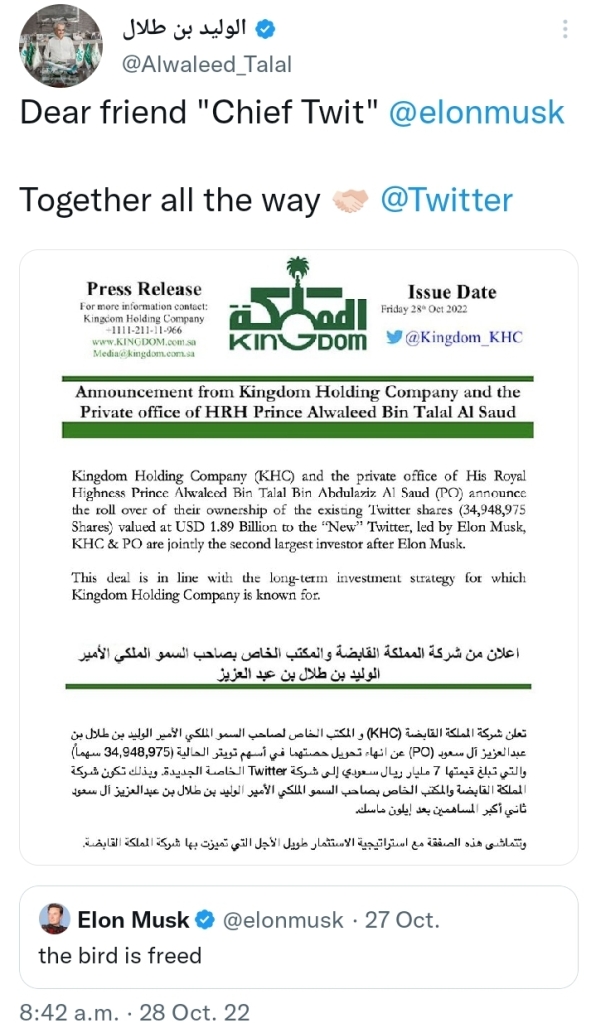
Just below the surface of this deal is a story of Saudi intrigue and international conflict. This is only one layer of the politics of Elon’s Twitter takeover. If we want to see more deeply into this matter then we should look to the interests of another major shareholder.
A Songbird for the Emir
The small Persian Gulf state of Qatar is one of the richest per capita in the world. It is also the fourth largest shareholder of Elon Musk’s Twitter. What does the Emir hope to gain from this deal?
In the mid-1990s, Qatar’s ruling al-Thani family wanted to end dependence on Saudi Arabia, the only country that shares a land border with Qatar.
Al Jazeera was established in 1996 as a means of exerting soft power. The Emir of Qatar guaranteed that he would fund the broadcaster for its first five years, enabling it to become the first independent news network in the Middle East.

Al-Jazeera’s independence meant it was free to cover stories that traditional, state-run news agencies wouldn’t touch. It was easy to find content by airing dissident voices from around the region, criticizing policies of states like Saudi Arabia, and stirring controversy. Critics of the network noted that Qatar was rarely the target of Al-Jazeera’s broadcasts despite its own human rights abuses. Nevertheless, Al-Jazeera was immensely popular and by 1999 was the region’s first 24 hour news channel.
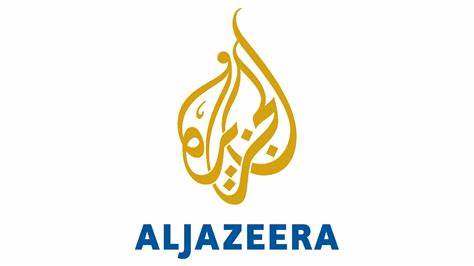
Al Jazeera advanced Qatari interests and foreign policy goals throughout the region. Through its investigative and reporting work, the network functions as an intelligence gathering and propaganda outfit, embodied by the Al Jazeera Center for Studies.
Al-Jazeera and the Arab Spring
Along with western social media websites, Al Jazeera is credited as one of the most important propaganda outlets of the Arab Spring.
AJ broadcast anti-government and other social criticism to Egypt, Yemen, Syria, and more. They promoted specific ideological lines as well, supporting groups which opposed Saudi interests such as the Muslim Brotherhood:
Yet Al Jazeera’s opaque loyalties and motives are as closely scrutinized as its reporting. It is accused of tailoring its coverage to support Hezbollah in Lebanon and Hamas in Gaza against their Lebanese and Palestinian rivals. Its reporter in Tunisia became a leading partisan in the uprising there. And critics speculate that the network bowed to the diplomatic interests of the Qatari emir, its patron, by initially playing down the protests in Egypt. [Source: nytimes.com]
Qatar’s role in boosting the Arab Spring brings us to the tensions between Riyadh and upstart Doha, which the Saudis see as part of their cold war with Iran.

Al-Jazeera’s propaganda in favor of the Arab Spring and its support for anti-Saudi forces in Syria and Libya made it dangerous. In the 2017-2021 diplomatic crisis, Qatar was blockaded by the Saudis, UAE, Egypt, and Bahrain: one of their demands was the silencing of Al-Jazeera. In the end, the blockade failed to achieve its goals, the Gulf states normalized relations, and together shifted to new priorities:
Among these are the war in Ukraine and its subsequent economic impact. As well as continuing unity between OPEC, the subsequent unity over managing oil prices and output has been a mutual concern for GCC [Gulf Cooperation Council] member states too...Concerns over regional and global security, particularly after the US’ botched withdrawal in Afghanistan in 2021 and renewed Saudi Iranian tensions have been another factor, particularly as the GCC has often accused Tehran of ongoing involvement in various countries’ political affairs and conflicts, such as Iraq, Yemen, Syria and Lebanon. [Source: Jonathan Fenton-Harvey writing for Anadolu Agency.]
For all their differences in method, Qatar and Saudi Arabia share a common vision. These are the only countries with Salaffiya (“Salafism”) as their state ideology. Both have sponsored religious schools, social movements, and armed jihadis around the world to advance their common cause.
Qatari Influence in America
Al Jazeera’s influence has not been limited to the Arabic speaking world. The network became a prized source for high quality reporting among western media companies and in 2006, it expanded into Al-Jazeera English.
Al Jazeera English (AJE)’s function was to counter the hegemonic power of western news agencies: “AJE claimed that the flow of information runs from North to the South, meaning from rich countries to poor countries and that AJE’s goal is to balance the flow.” Ultimately that is achieved by projecting Qatari news media outward and making Al-Jazeera as prestigious and credible as CNN, BBC, and other global operators.
As of 2022, AJE has 21 bureaus around the world in addition to the 42 bureaus of AJ Arabic.
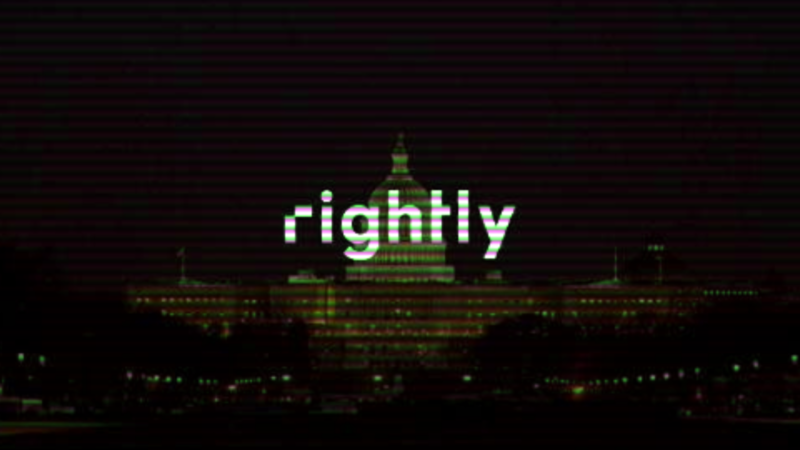
Al-Jazeera Media Network (AJMN) did not stop its expansion with AJE. Most relevant to our current story is the launch of Rightly in 2021. Rightly was an America-based news outlet for conservatives who “felt left out of mainstream media.” The natural audience for this in 2021 was, of course, the MAGA right-wingers.
Rightly shut down with just a few months left in 2022 and it’s not because the Qatari royals have lost interest in soft power. The stated reason is that AJMN wanted to maintain its reputation for professionalism and nonpartisanship—necessary components of its strategy to penetrate media markets and promote dissident views. Rightly did not wind down because of a fragmented or Islamophobic audience, it shut down to protect the AJ brand.
An Audience with the Emir
Elon’s Twitter takeover has resolved some of the challenges to Qatari soft power on the American right wing. The conservative social media landscape was fragmented after the Capitol Riot and the purges of QAnon and MAGA accounts on Twitter.
Elon has opened the door for these people to return from their various hideouts. He has also started exposing internal documents that vindicate their persecution complexes. Yes, Twitter really was run by a woke liberal mafia! They really did censor you! And now 75% of the censors are fired, the bird is freed!
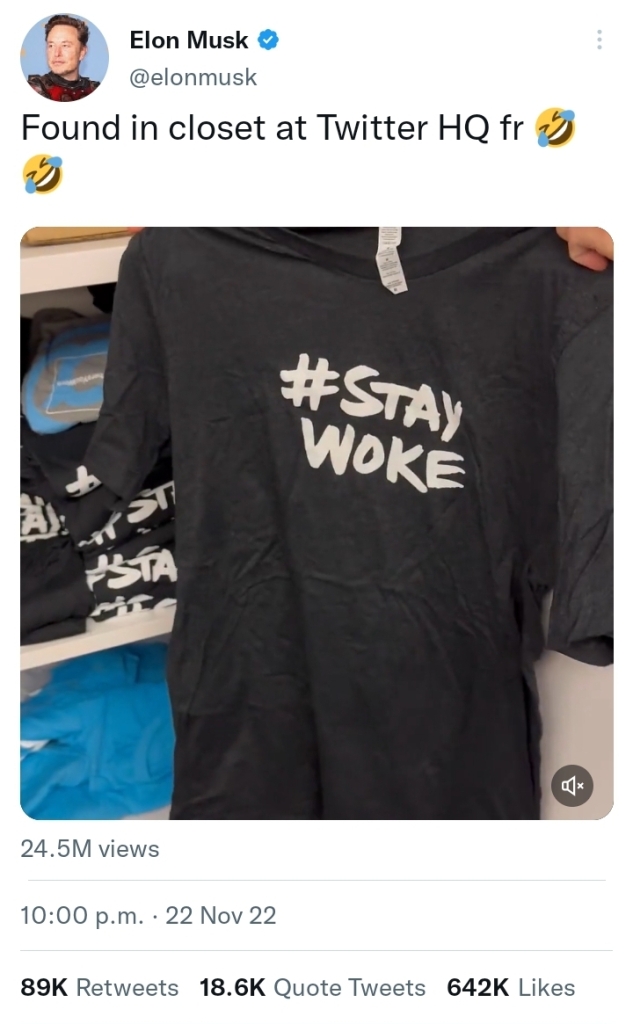
The Twitter that Elon runs is now the premiere gathering place for conservatives who “feel left out of mainstream media.” As we have seen with Saudi Twitter, it is very easy to control social media narratives using bots and filters. Was the Emir of Qatar expecting Rightly 2.0 when he invested in Musk’s takeover?
Since the company went private, it has not been easy to find out what Twitter’s shareholders have been discussing. We do know that Elon visited Doha, the capital of Qatar in December 2022. Obviously, it was to take in the finals of the FIFA World Cup.
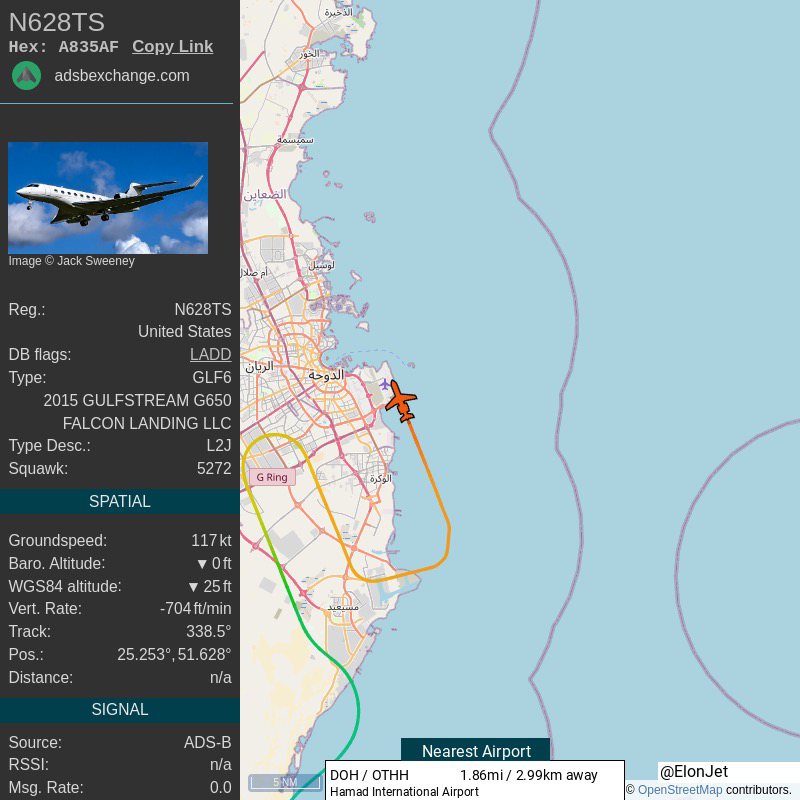
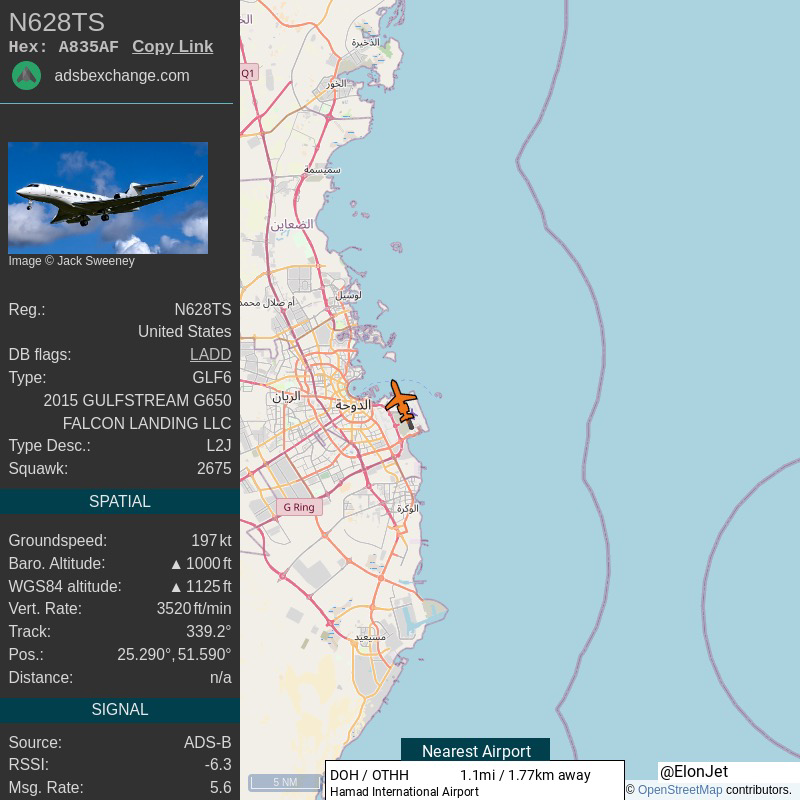
Equally obvious is that this doubled as a business trip. While attending the football match Elon was photographed meeting with the CEO of the Qatar Investment Authority, Mansoor bin Ebrahim Al-Mahmoud.
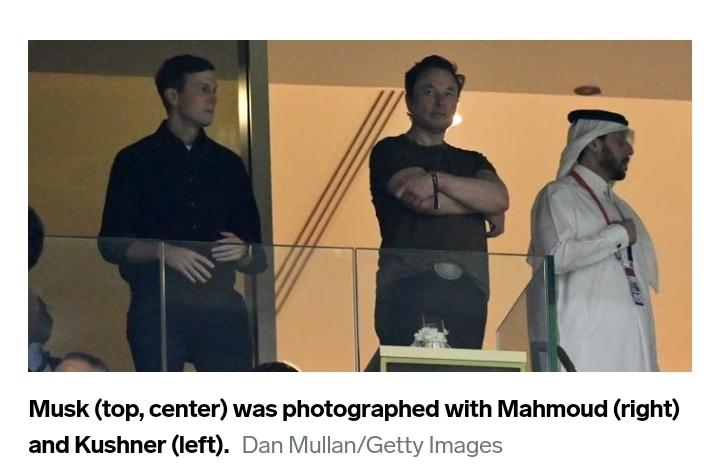
Around five hours after the match, Musk tweeted his famously binding poll asking whether he should resign as CEO of Twitter. On December 20, the final results were 57% “Yes” to 43% “No” and Musk said he would find his replacement. However an independent poll conducted by HarrisX showed that 61% of Twitter users favored Musk as CEO. Elon’s response was to suggest that bots had rigged the vote against him.
He never did say whose bots they were.
Blowing Uncle Sam’s Cover
Two days after his meeting with al-Mahmoud, Elon released the eighth batch of the “Twitter Files.” Previous releases of internal documents were made to expose the old management’s close relationship to the United States Government (USG). These included acts of partisan censorship and moderation, which were very upsetting to the Truth Social and Gab crowds. Twitter Files 8 contained something much more relevant to our current subject.
Al Jazeera reported on the files the day of their publication. The files described how U.S. Central Command (CENTCOM) operated “priority accounts” which “promoted information in support of U.S. military narratives, including criticism of Iran, support for the U.S. and Saudi Arabia-backed war in Yemen, and claims about the superior accuracy of U.S. drone strikes.”
The accounts used false profile pictures and names to disguise themselves as civilians from the Middle East.
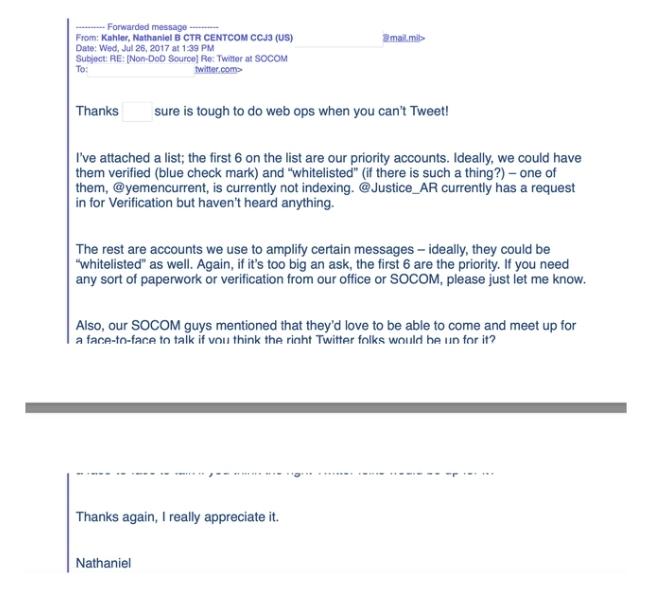
The Twitter Files show that these operations were known to management for at least two years between 2020 and 2022 and that no action was taken against them. There is documentary evidence that the company saw these operations as sloppy and easy to expose, implying the depth of Twitter’s cooperation with the Department of Defense:
For example, Twitter lawyer Jim Baker mused in a July 2020 email, about an upcoming DoD meeting, that the Pentagon used ‘poor tradecraft’ in setting up its network, and were seeking strategies for not exposing the accounts that are ‘linked to each other or to DoD or the USG’. [Source: Al Jazeera, 22 December 2022]
With Elon at the helm, Twitter appears to be reversing its tack on this relationship with the Pentagon. Exposing American influence operations enables rival bot and troll armies to fill the gap. USG critics can now point to the Twitter Files as proof that the Pentagon stages massive false protest movements on social media.
This has long been an accusation leveled against the social media site by America’s enemy states: that Twitter facilitates fake-grassroots democratic movements which provide cover for a coup, a “Color Revolution.” This is the exact same accusation that had opponents of the Arab Spring railing against Twitter.

At the same time that American bots are being compromised, there are Saudi and Qatari accounts ready to advance their own narratives. Could Twitter’s new owners hope to wrest control of this info weapon from the Pentagon?
Finding Fellow Seekers
To push online propaganda effectively, the Salafi states need more than bots. They need human influencers and infowarriors, organic figures with real appeal to real users. Fortunately, they will not have to search very far as there is a prime candidate in their own neighborhood.
In 2011, the Emir of Qatar and the President of the United States permitted the Taliban to establish their Political Office in Doha. Since 2013, the Taliban Political Office has served as an informal diplomatic hub for their unrecognized state, the Islamic Emirate of Afghanistan. In 2020, Qatar served as the neutral host of the US-Taliban Agreement, as it also provided the headquarters for CENTCOM at Al-Udeid Airbase, America’s largest base in the region.
Though the Islamic Emirate of Afghanistan has no formal diplomatic ties, it does have friends abroad. The men who formed the Taliban, including Mullah Omar, had studied in Saudi-sponsored schools before fighting as mujahideen. This is where the group took their name, meaning “students” or “seekers”. Saudi Arabia had begun sponsoring Islamic seminaries in the borderlands of Afghanistan and Pakistan in 1979. Saudi money and salafi ideology was exported to these schools and mujahideen were recruited from them for the war against the USSR.
The Digital Mujahid
The Taliban of today are more than fighters on the ground. Members first opened Twitter and other social media accounts in 2011, during the Arab Spring. The group had realized the necessity of information warfare to advance their struggle against NATO.
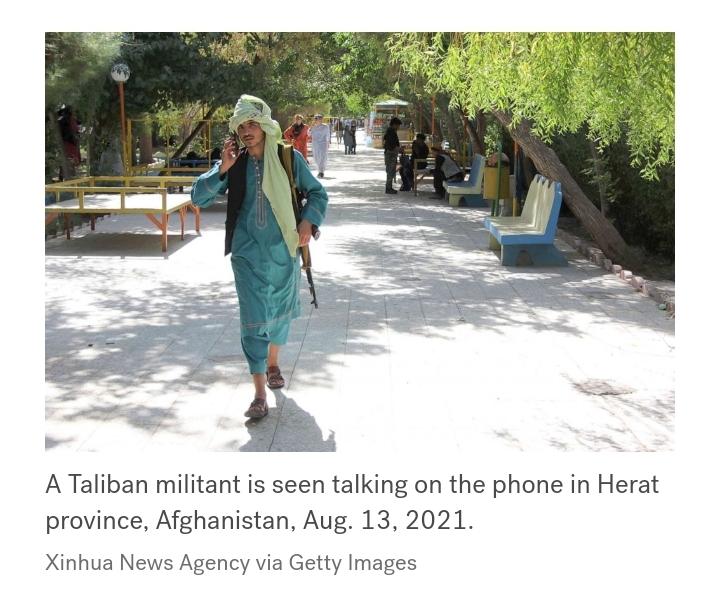
The Empirical Studies of Conflict project at Princeton published an analysis of Taliban Twitter activity between April and September 2021. According to the ESOC paper, Twitter was an essential propaganda tool of the Taliban as it took control of Afghanistan. Only 63 accounts were directly associated with the Taliban, but through their network of followers their messages reached 3 million users.
Through this network, the Taliban criticized their opponents, promoted their victories over NATO, highlighted defectors from the National Army, and presented themselves as a government-in-waiting. These accounts also shared videos of celebrations and grateful residents in areas under Taliban control, portraying the people as happy and free.
During their social media campaign, the Taliban presented themselves as liberators on the verge of kicking out the foreign oppressors. Despite Western perception of them as backwards traditionalists, the Taliban ran a very effective and modern propaganda campaign.
Twitter’s management had knowingly enabled the Taliban to run that campaign. While Facebook and YouTube had banned Taliban affiliated accounts Twitter had refused unless those accounts promoted violence. Yet when Taliban accounts routinely violated the site’s Terms of Service by promoting violence and sharing gory content, they were not moderated. Instead, Twitter included Taliban accounts in its advertising service. After all, could the company really afford to deprive three million users of Disney+ and Royal Bank of Canada ads?
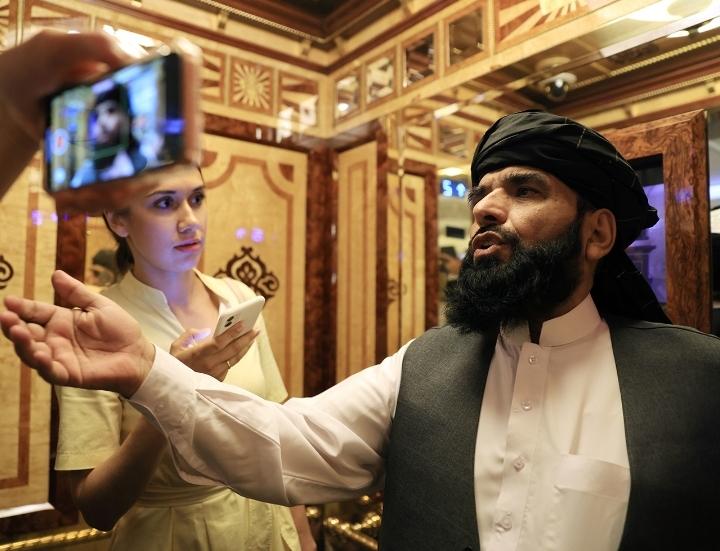
On January 16, 2023 Anglophone media reported that high ranking Taliban officials had purchased blue verification check marks under Elon’s subscription plan.
The Guardian reported the next day that Twitter had revoked the blue checks, but it was too late.
Verified accounts had been prized by established journalists as a way to identify themselves as trustworthy sources. In their eyes this incident was proof that Musk had discredited Twitter verification as a whole. Evidently, the Taliban was welcome on Mr. Musk’s platform but journalistic integrity was not!
Heroes of the Alt-Right
After capturing Kabul, the Taliban filled government positions with its members. Their days of fighting enemies and sleeping under the stars were over. Now they have crowded, chaotic, and restrictive urban lifestyles. Some of these victorious Mujahideen described the modern ennui that they and their comrades struggle with:
“In our ministry, there’s little work for me to do. Therefore, I spend most of my time on Twitter. We’re connected to speedy Wi-Fi and internet. Many mujahedin, including me, are addicted to the internet, especially Twitter.”
What have Taliban posters been doing with their post-war boredom and Twitter addiction? They have been making inroads with American ultraconservatives who “felt left out of mainstream media.”
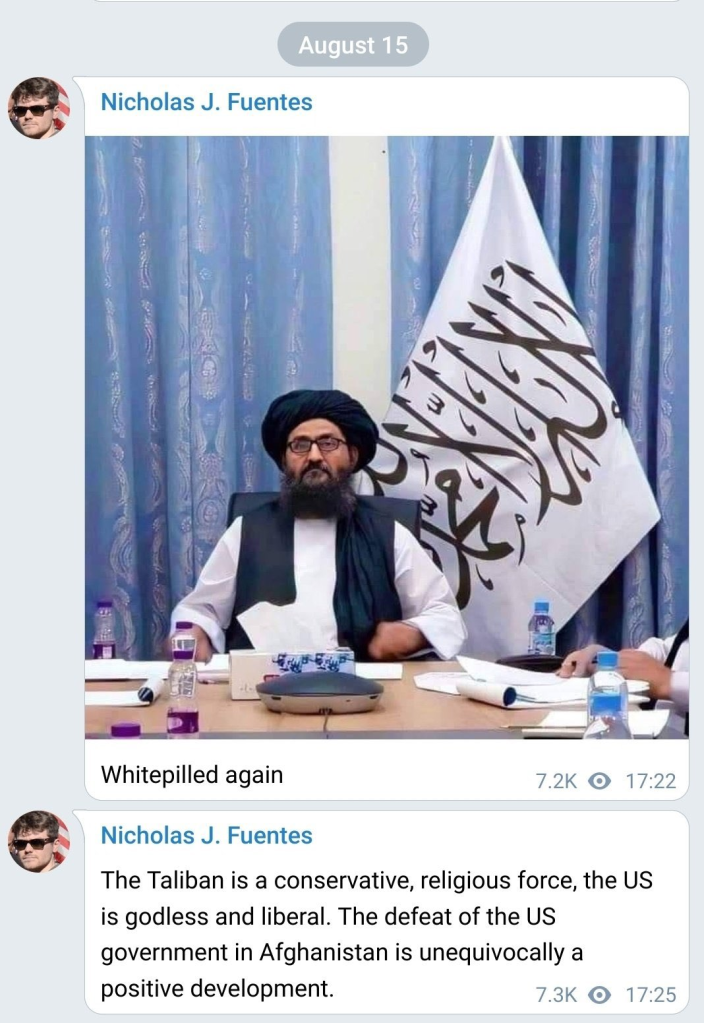
The Fall of Kabul on August 15, 2021, was celebrated by old and new Taliban supporters. American far-right influencers immediately seized on the Fall as a sign of the Taliban’s moral strength.
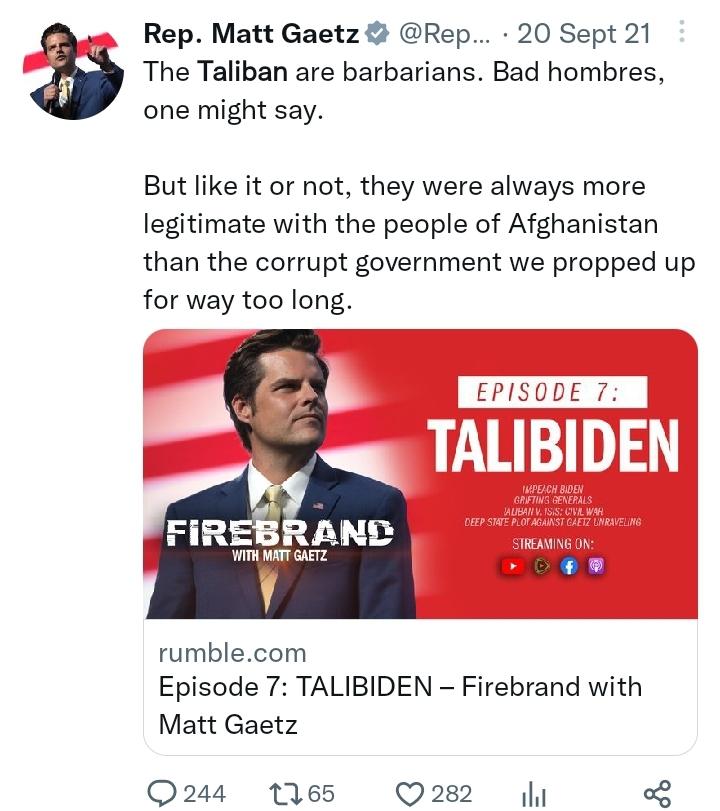
After the war the Taliban began appearing on Twitter Spaces, the poorly-moderated voice chat service introduced in 2021. Atlantic Council senior fellow Emerson Brooking told the Washington Post that supporters of the Taliban were “hosting dozens of conversations in English and Pashto to gain support for the militant group.” One provocative example came in December 2022 when the right-wing influencer Sameera Khan hosted a Space with Taliban members in support of accused sex-trafficker Andrew Tate:
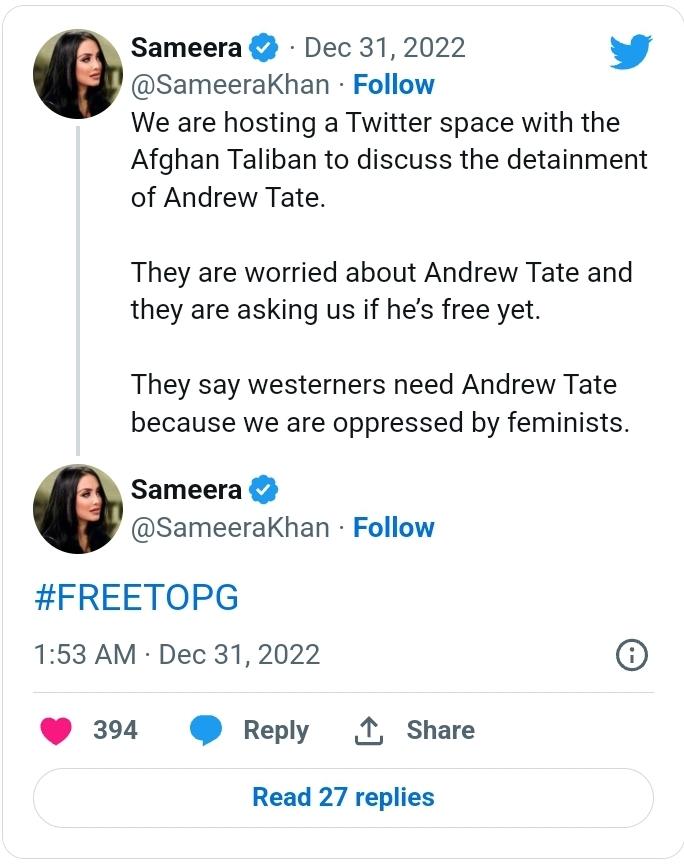
Whether genuine admiration or cynical grift, these opinion-makers have been promoting the Taliban’s narratives and affirming the group’s moral right to rule Afghanistan. They are establishing common grounds with the Islamic Emirate and looking for ways to cooperate.
The Technoking’s Troubles
Though he has told the public that he hopes to sell Twitter at cost, Elon’s internal messages show that the company is in trouble. A memo emailed to employees revealed that Elon believed Twitter had fallen to a value of $20 Billion, slightly more than the $19B he had borrowed from Saudi and Qatari investors to take the company private. Twitter is not the only part of his business empire which is shedding value.

Tesla stock, the foundation of Musk’s vast wealth, has lost half of its value in the past twelve months. The electric vehicle manufacturer is rapidly losing market share to competitors: the Chinese auto firm BYD sold more EVs in 2022 than they had in the previous four years combined, a total of 550,000 more EVs than Tesla delivered worldwide in 2022. Tesla reported at its Q1 2023 earnings call that it had increased sales by 4%, but at the same time said that they had 78,000 unsold vehicles. These were claimed to be “in transit” as the company shifted its focus from exports to domestic sales.
The competition will not be any easier in the domestic market. General Motors reported 20,000 sales of their Chevrolet Bolt in Q1 2023, up from 16,000 in the previous quarter. The Bolt sells for $10,000 less than the cheapest Tesla model. Meanwhile Volkswagen plans an affordable EV by 2025 which will cost $9,000 less than a Tesla. The days of Elon’s domination of the EV market are over, and Wall Street analysts are downgrading Tesla’s stock outlook from Buy to Hold.
Tesla’s declining fortunes are not the only threat looming over Elon’s head. In June 2021 a $258B racketeering lawsuit was launched against him by an investor who claims that Elon had promoted Dogecoin and manipulated its price despite knowing that it had no intrinsic value. Multiple plaintiffs have joined the case since then as the price of DOGE has risen and fallen in sync with Elon’s Twitter posts and business announcements. The pyramid scheme allegations are strengthened by the fact that the only person who has ever given Dogecoin utility is Elon Musk: Tesla began accepting Dogecoin as payment for merchandise in 2022 and SpaceX announced in 2021 that it would launch a satellite funded entirely with Dogecoin. SpaceX went so far as to say that this would become the funding model for future space missions. On March 31, 2023 Elon’s lawyers asked the court to dismiss this case by saying that their client had only made jokes and posted “silly pictures,” denying his history of price manipulation. Two days later Elon changed the Twitter logo to a shiba inu, spiking the coin’s value and his lawyers’ blood pressure.
With Elon’s risks and losses mounting it is uncertain how he can support a website which is hemorrhaging money. He will become increasingly dependent on his co-owners to shore up Twitter’s finances, and only Prince Alwaleed knows how they will use that leverage.
———————————————————————————————-
Twitter’s new owners stand to gain immeasurable advantages from their investments. From control of public discourse at home to the promotion of their ideology abroad, the power potential of Twitter is enormous.
Now that Saudi Arabia and Qatar have put aside their differences, they can work in concert to roll back American bot networks in favor of their own. Musk has brought the scattered American Right back to a place where they are free to meet and idolize real-life jihadis.
The stage is set for a new era of influence ops in which American reactionaries see Islamic militants as allies in the struggle against the liberal world order.

CovertAction Magazine is made possible by subscriptions, orders and donations from readers like you.
Blow the Whistle on U.S. Imperialism
Click the whistle and donate
When you donate to CovertAction Magazine, you are supporting investigative journalism. Your contributions go directly to supporting the development, production, editing, and dissemination of the Magazine.
CovertAction Magazine does not receive corporate or government sponsorship. Yet, we hold a steadfast commitment to providing compensation for writers, editorial and technical support. Your support helps facilitate this compensation as well as increase the caliber of this work.
Please make a donation by clicking on the donate logo above and enter the amount and your credit or debit card information.
CovertAction Institute, Inc. (CAI) is a 501(c)(3) non-profit organization and your gift is tax-deductible for federal income purposes. CAI’s tax-exempt ID number is 87-2461683.
We sincerely thank you for your support.
Disclaimer: The contents of this article are the sole responsibility of the author(s). CovertAction Institute, Inc. (CAI), including its Board of Directors (BD), Editorial Board (EB), Advisory Board (AB), staff, volunteers and its projects (including CovertAction Magazine) are not responsible for any inaccurate or incorrect statement in this article. This article also does not necessarily represent the views the BD, the EB, the AB, staff, volunteers, or any members of its projects.
Differing viewpoints: CAM publishes articles with differing viewpoints in an effort to nurture vibrant debate and thoughtful critical analysis. Feel free to comment on the articles in the comment section and/or send your letters to the Editors, which we will publish in the Letters column.
Copyrighted Material: This web site may contain copyrighted material the use of which has not always been specifically authorized by the copyright owner. As a not-for-profit charitable organization incorporated in the State of New York, we are making such material available in an effort to advance the understanding of humanity’s problems and hopefully to help find solutions for those problems. We believe this constitutes a ‘fair use’ of any such copyrighted material as provided for in section 107 of the US Copyright Law. You can read more about ‘fair use’ and US Copyright Law at the Legal Information Institute of Cornell Law School.
Republishing: CovertAction Magazine (CAM) grants permission to cross-post CAM articles on not-for-profit community internet sites as long as the source is acknowledged together with a hyperlink to the original CovertAction Magazine article. Also, kindly let us know at info@CovertActionMagazine.com. For publication of CAM articles in print or other forms including commercial internet sites, contact: info@CovertActionMagazine.com.
By using this site, you agree to these terms above.
About the Author

Ambrose is an independent researcher and former social worker from Toronto, Ontario.
Trained in philosophy and history, he follows the subcurrents of politics and economics to find hidden stories.
Ambrose can be reached at ambrose.r.sylvan@gmail.com.

